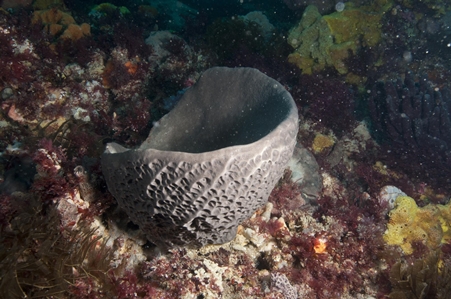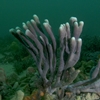General Description
A sandy-grey, cup-shaped sponge species. Size of about 30 cm.
Biology
Always firm and often incompressible in texture, sponges in this genus may be brittle due to the large quantities of sand incorporated into the skeleton.
Habitat
Reef areas, to depth of 30 m.
Sponge gardens
Reefs
Distribution guide
South Australia and Port Phillip in Victoria.
Species Group
Depth
Water Column
Max Size
30 cm
Diet
Plankton or particles
Commercial Species
No
Global Dispersal
Recorded in Australia
Species Code
sp. MoV 6685
Identify
Conservation Status
- DSE Advisory List : Not listed
- EPBC Act 1999 : Not listed
- IUCN Red List : Not listed





